Ertach Kernow - Cornwall’s early guidebooks – Full steam ahead
Cornwall's early guidebooks became much more important following completion of the Royal Albert Bridge in 1859. This opened up Cornwall, with the railway bringing ever larger numbers of tourists who increasingly appreciated what was on offer here. The viability of mass production of guidebooks for sale to tourists was now possible. These included advertising for farsighted businessmen wanting to cash in on the new tourism industry. The railways had created the opportunity to travel to Cornwall and entrepreneurs were seeing hotels in a glowing light of potential future profits. The earliest at Newquay, designed by Silvanus Trevail, was the Great Western Hotel completed in 1879 This was just after the railway to Newquay had been completed in 1876. Trevail would go on to build numerous hotels throughout Cornwall including the iconic Headland Hotel at Newquay, later frequented by the Royal family. Newquay a small town with traditional coastal industries was totally transformed through the railways, becoming a major tourist destination itself.
The profusion of guidebooks included some publications that ran for nearly one hundred years that included the Ward & Locke red books, Blacks Guide-Books, Homeland Association guides and many more. These weren’t filled with just glossy pictures but provided substantial information about the towns covered, including Bradshaw’s Guide much beloved by Michael Portillo. George Bradshaw saw the future producing his first railway timetable in 1839. A great change taken for granted today was the standardisation of time, which had varied throughout Britain. For example, Truro was 20 minutes Local Mean Time behind London, travellers catching a train from London would possibly need to know the times at various stations along the train’s route. The combination of the railways and telegraph eventually brought around a standard Greenwich Mean Time that did not vary depending on where you lived throughout Britain although it wasn’t complete until the passing of the ‘Statutes (Definition of Time) Act 1880’. The Great Western Railway were fast off the mark with their standardisation in 1840 and the other railway companies followed suit fairly quickly.
Bradshaw’s at first was quite dismissive of Cornwall. After praising the Devon countryside, it says ‘Cornwall, from its soil, appearance, and climate, is one of the least inviting of the English counties. A ridge of bare and rugged hills, intermixed with bleak moors, runs through the midst of its whole length, and exhibits the appearance of a dreary waste.’ Certainly, a sentence to really insult any true Cornish person and that’s just with the two words ‘English counties’ included. It goes on to provide a description of some of the largest towns, with basic information often mentioning telegraph facilities.
Another series of guides brought out before the coming of the railway’s to Cornwall were those published by Adam and Charles Black of Edinburgh. The early 1855 edition a thin volume of 146 pages covering Devon and Cornwall contains just 34 pages on Cornwall plus five on the Isles of Scilly. In contrast it included 35 pages promoting its other guides and atlases. An illustration of the lack of interest in Cornwall and what it had to offer at that time. Newquay now Cornwall’s largest holiday resort was in 1855 just considering itself a tourist destination. Blacks Guide wrote in just over three lines ‘New Quay. Seven miles west of St Columb Major is a rising watering place. The scenery in the vicinity is pleasing; and a bed of limestone containing many organic remains is interesting’. St Columb Minor, had little to recommend it and Castle an Dinas one of the finest early hill forts in Cornwall is just described as an entrenched hill.
Thirty years later in 1885 Blacks had expanded their interest in Cornwall in their 13th edition a book covering only Cornwall of 235 pages, albeit advertising from all over Britain within 112 pages. Newquay had a passenger railway from 1876 following improvements to the railway line and rebuilding of the Trenance Viaduct. It now warranted a dizzying fifteen lines talking about pilchard fishing and continuing the limestone themes. Even the entry for St Columb Minor had been expanded and Castle an Dinas’ ‘remarkable elevation looms magnificently against the sky’. There is even a recommendation to climb to the summit for an ‘examination of the noble panorama which it overlooks’. Guidebooks it looks were moving in the right direction and appreciation in Cornwall increasing. These help illustrate the difference the railways made to Cornwall generally over a twenty-five-year period.
Murray’s Handbook for Travellers were begun in 1836 by John Murray covering tourist destinations in Europe and Asia. The first guide covering Devon and Cornwall was published in 1851, again before the Royal Albert Bridge was completed, therefore relating to just travel by road. It provides a considerable amount of information that can be found as one travelled following the various routes laid out in the guide. It is very informative with descriptions and histories many are often relevant 170 years later. Murray’s guides in this format were produced for Cornwall to at least 1906. What is quite interesting with the earliest editions is that there are no advertisements, photos or maps whatsoever.
Many people will be acquainted with the Ward and Locke red travel guides that lasted well into the second half of the 20th century. Over the years these have proved a useful tool for writers and researchers. Originating in 1880 with green paper covers they received their well-known red covers in 1892. By around 1900 there were 72 different guides to major towns and areas of Britain and beyond into Europe. Bearing in mind how little had been written about Newquay in Black’s Guide of 1885, by 1898 Ward & Locke had a red travel guide for Newquay and North Cornwall covering many aspects of interest that could be found in Newquay and also trips to other places within the vicinity. Besides useful maps there was information about a whole range of activities, places to visit As well as individual town material. These early guides catered for all types of holiday whether tourists were travelling by train, or motor vehicle. The final red guides then with a colourful dust jacket added were published during the 1970’s.
By the 1880’s a series called the ‘Thorough Guides’ were being written by M J B Baddeley and C S Ward. These covered a range of areas throughout Britain. These volumes contained a number of high-quality coloured maps and plans. produced by Bartholomew. Titles covering Cornwall were included with Devon and took in South Devon and South Cornwall and North Devon and North Cornwall, These were well researched guides with lots of historical information as well as the normal information required about various towns for the travelling tourists.
Perhaps a little less well-known were Darlington’s Guides to South Devon and South Cornwall and also the north coast versions North Devon and North Cornwall published from around 1908. These contained photographs unlike the Thorough Guides, but fewer maps. There seemed to be a themed exterior design many of these guidebooks were red and of very similar size, perhaps to easily fit in a pocket.
Guides were published by Edward Stanford included Mackenzie Walcott’s A Guide to the Coasts of Devon and Cornwall Descriptive of Scenery Historical, Legendary and Archaeological in 1851. Covering a huge range of subjects and probably one for those knowing where they wanted to go. Walter H. Tregellas, author of Cornish Worthies produced a guide for Edwards Stanford in 1878 entitled Tourist's Guide To Cornwall and The Scilly Isles. Stuffed full of interesting information it took into account the railways now operating throughout many parts of Cornwall.
Many early guides have become collector’s items, some reaching substantial sums of money. They add insight to aspects of Cornwall’s social history, illustrating what may have interested people when travelling to and around Cornwall over one hundred years ago. There is a vast difference between those published before the completion of the Royal Albert Bridge in 1859 to those written towards the end of the century when Cornwall’s tourism industry was developing strongly. Accommodation advertisements often prove amusing when compared to our demands today. The facilities added and promoted over the coming decades seem so basic now, such as hot and cold running water, gas lighting and electric fires.
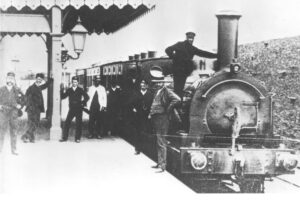
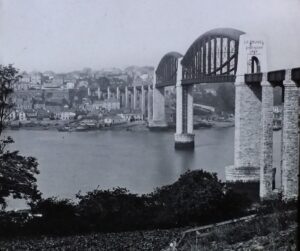
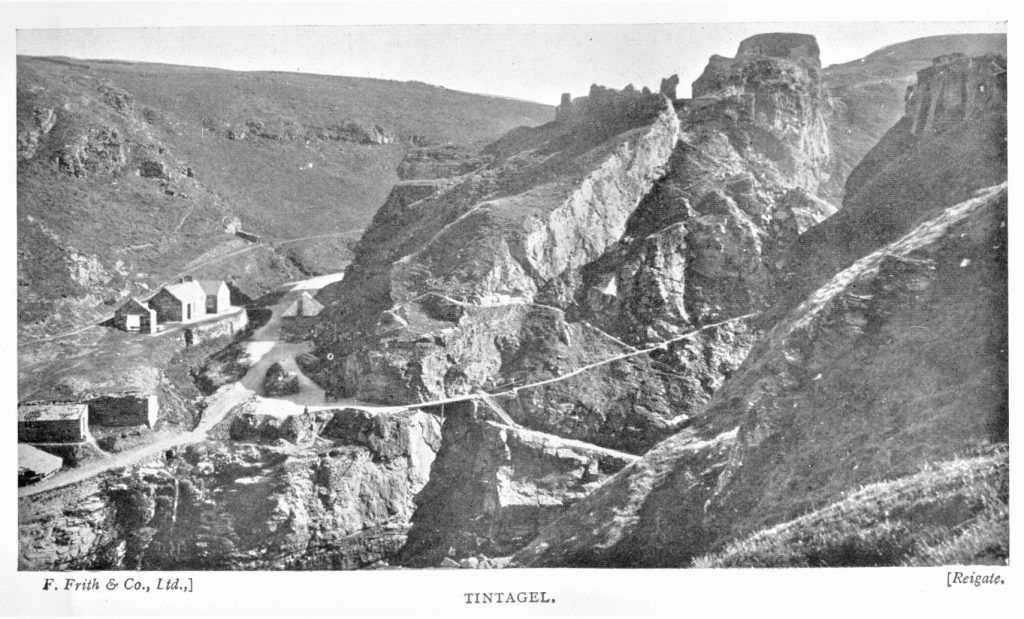
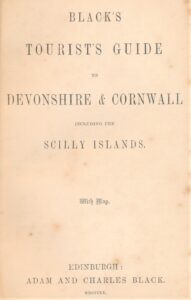
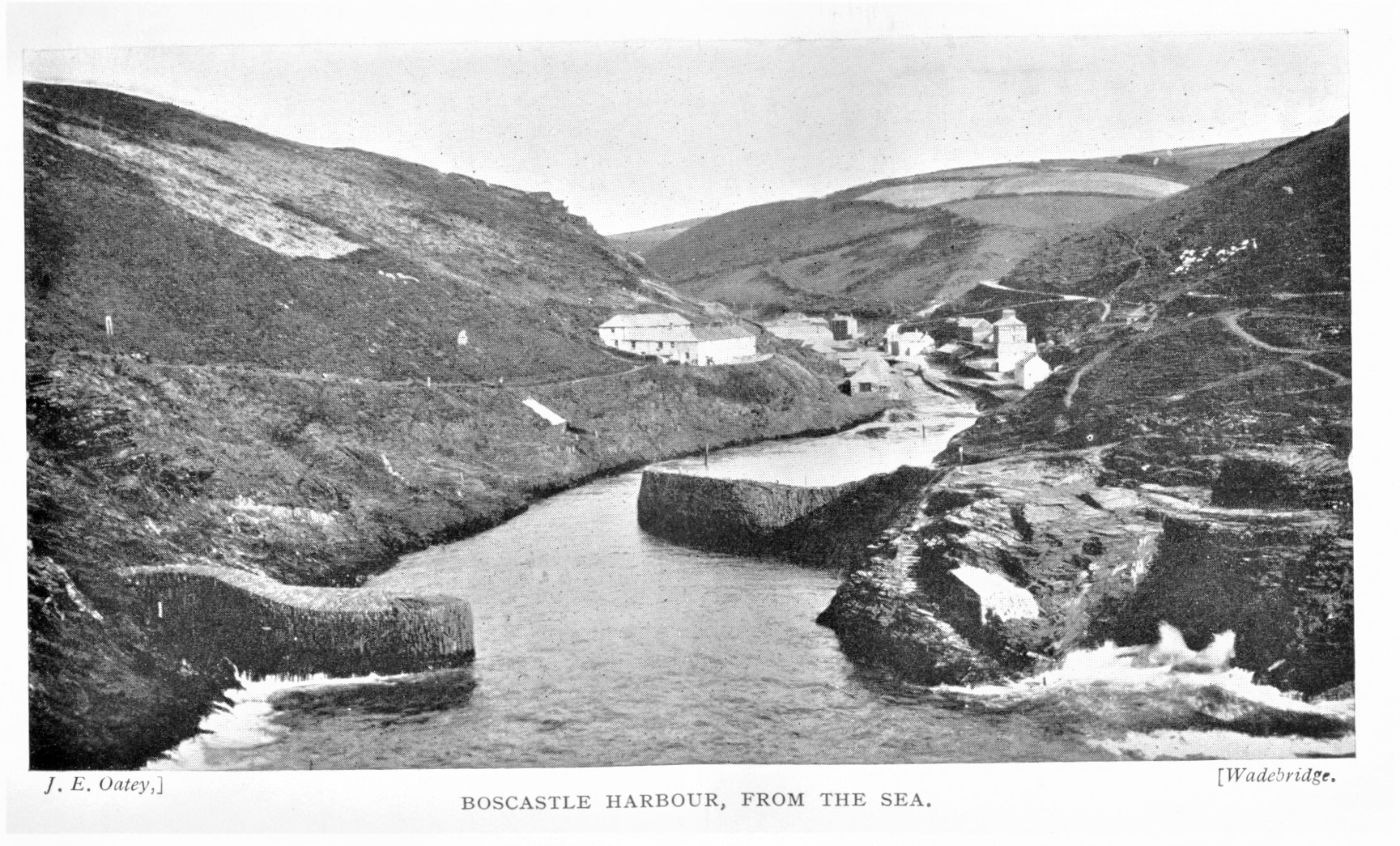
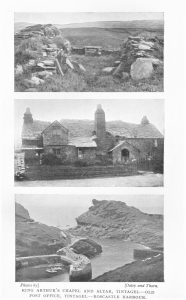
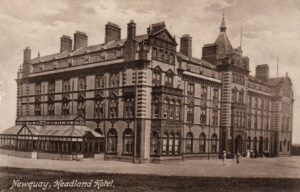
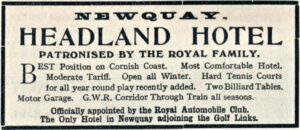
![Newquay Railway Station post WWI [would become longest platform in Cornwall] Newquay Railway Station post WWI [would become longest platform in Cornwall]](https://www.cornwallheritage.com/wp-content/uploads/2021/09/Newquay-Railway-Station-post-WWI-would-become-longest-platform-in-Cornwall-300x161.jpg)
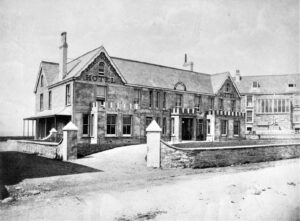

![[65] Voice - Ertach Kernow-220921A - Full Stream Ahead [S] Ertach Kernow - Full Stream Ahead early guidebooks](https://www.cornwallheritage.com/wp-content/uploads/2021/09/65-Voice-Ertach-Kernow-220921A-Full-Stream-Ahead-S-232x300.jpg)
![[65] Voice - Ertach Kernow-220921B - Full Stream Ahead [S] Ertach Kernow - Full Stream Ahead](https://www.cornwallheritage.com/wp-content/uploads/2021/09/65-Voice-Ertach-Kernow-220921B-Full-Stream-Ahead-S-231x300.jpg)
![[65] Ertach Kernow Heritage Column - 22 September 2021 - Cornish Place Names a gateway to our language 22 September 2021 - Cornish place names a gateway to our language](https://www.cornwallheritage.com/wp-content/uploads/2021/09/65-Ertach-Kernow-Heritage-Column-22-September-2021-Cornish-Place-Names-a-gateway-to-our-language-267x300.jpg)